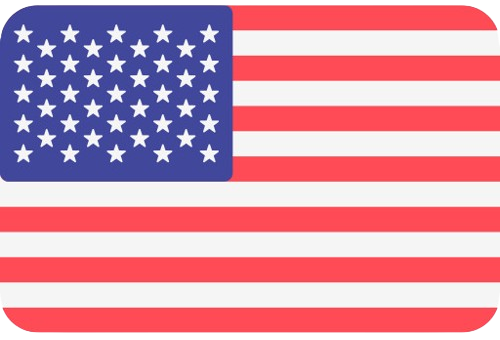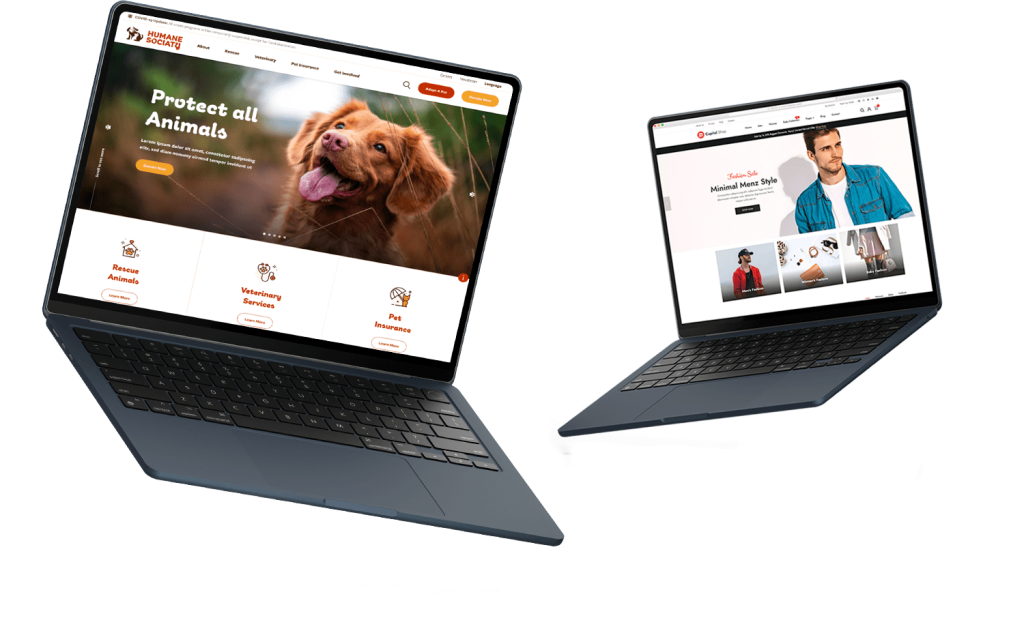10 Types of Social Media & How They Improve Your Business in 2025
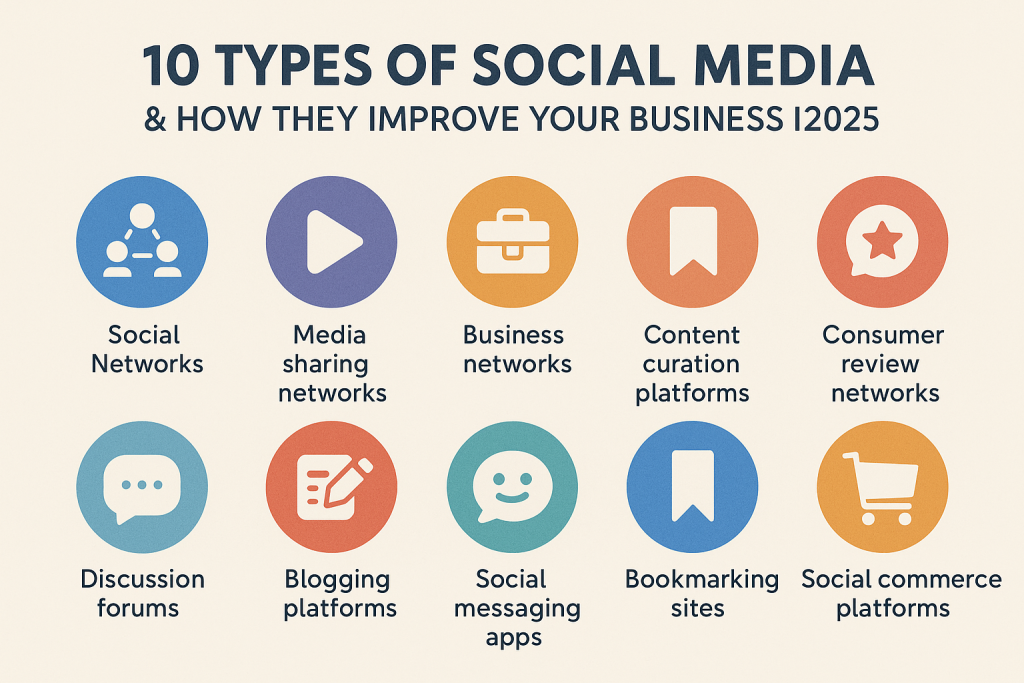
Social media is no longer a nice-to-have—it’s an essential part of every brand’s digital presence in 2025. As businesses continue to prioritize social media strategy development, understanding the distinct types of platforms available can be the difference between a stagnant presence and a thriving online community. In this article, we explore 10 impactful types of social media and how each can improve and benefit your business this year and beyond. 1. Video Social Media Video content remains king. Platforms like YouTube, TikTok, Instagram Reels, and Facebook Watch allow businesses to engage with users through storytelling, product demos, how-tos, and behind-the-scenes content. Short-form videos, especially on TikTok and Instagram, are highly shareable and attention-grabbing. Brands leveraging Instagram marketing services can increase reach, boost conversions, and connect emotionally with audiences. These videos offer a deeper way to express your brand personality and increase brand loyalty. 2. Audio Social Media Audio-based platforms like Spotify, Twitter Spaces, and Clubhouse have found their niche in thought leadership and real-time interaction. Podcasts and live audio rooms help build communities and educate audiences. For businesses, creating branded podcasts or hosting live industry discussions is a strong play. It’s an intimate format that positions your brand as a subject matter expert. Plus, it helps with social media brand awareness through niche targeting. 3. Business Social Media LinkedIn, X (formerly Twitter), and even Threads are evolving as platforms for professional interaction. These networks allow brands to connect with decision-makers, recruit top talent, and share valuable B2B content. If you offer LinkedIn advertising solutions, you’re already aware of the power this platform has for lead generation. Sharing industry insights and joining relevant conversations can enhance credibility and bring in high-value clients. 4. Shoppable Social Media Instagram Shop, Facebook Marketplace, and TikTok Shopping blur the lines between content and commerce. Users can now effectively browse and purchase products directly within these apps. Businesses can showcase their product catalogs, run Facebook ad campaigns, and link users directly to checkout pages—without them ever leaving the platform. This mtigates friction in the buyer journey and significantly improves conversion rates. 5. Private or Closed Social Media Facebook Groups, Slack communities, and Discord servers are examples of closed social media networks that foster exclusivity and loyalty. Creating a branded group enables businesses to build deeper relationships, get real-time feedback, and nurture brand advocates. These platforms are ideal for community-led growth strategies where word-of-mouth and peer influence play major roles. 6. Inspirational Social Media Pinterest, Instagram, and YouTube function as inspiration boards for users seeking ideas in fashion, home décor, food, travel, and more. These platforms prioritize visual storytelling and allow brands to present their products or services in an aspirational context. With strategic social media content creation, businesses can visually demonstrate how their solutions fit into customers’ lifestyles, ultimately driving more clicks, shares, and conversions. 7. Discussion Forums Quora and Reddit remain critical spaces for answering questions, sharing insights, and showcasing your brand’s expertise. Discussion forums provide a unique opportunity to engage in authentic conversations with potential customers. Participating in relevant subreddits or forum threads builds thought leadership and generates indirect traffic to your website. 8. Review Sites Platforms like Yelp, TrustPilot, and Google Business Profile act as decision-making hubs for online buyers. Positive reviews help build credibility, while negative ones present opportunities for improvement. Engaging with reviews boosts transparency and signals your brand’s commitment to customer satisfaction. These sites are crucial for managing social media brand awareness in a trust-driven landscape. 9. Social Media Livestreams Facebook Live, YouTube Live, and Instagram Live offer real-time video broadcasting, perfect for Q&A sessions, product launches, or behind-the-scenes sneak peeks. Live video fosters instant engagement and builds trust by humanizing your brand. It also allows for direct interactions, helping deepen customer relationships and encouraging followers to take immediate action. 10. Social Blogging Networks Medium, Tumblr, and LinkedIn Articles combine blogging with social sharing features. These platforms let brands publish long-form content and promote thought leadership. Maintaining a blog on these platforms helps with SEO, builds authority, and invites user interaction through comments and shares. When integrated with broader social media strategy development, they become powerful assets for content marketing. Emerging Platforms to Watch in 2025 As the world of social media continues to thrive, new platforms are challenging the dominance of traditional networks. Channels like Threads, Bluesky, and Mastodon are gaining traction among niche audiences looking for decentralized or alternative digital spaces. Forward-thinking brands are beginning to explore these platforms to build early visibility and connect with tech-savvy, trend-aware consumers. Experimenting on these platforms can also give your brand a competitive edge, allowing you to test innovative formats and community-building strategies before the space becomes saturated. For brands focused on social media brand awareness, exploring emerging platforms in parallel with core channels ensures your strategy remains dynamic and future-proof Final Thoughts In 2025, the social media ecosystem will be more diverse, dynamic, and powerful than ever. No single platform will serve every business need. Instead, brands that identify the right mix of formats—video, audio, private groups, forums, shoppable posts—will stand out. At Speed Dot 360, we help brands like yours tap into the right channels and craft a custom strategy built for measurable growth. Whether you’re launching Facebook ad campaigns, investing in Instagram marketing services, or seeking a full-stack influencer marketing agency, our expertise ensures your social presence is more than just active—it’s effective.
Social Media as a Search Engine: Will Social Media Replace Google Search?
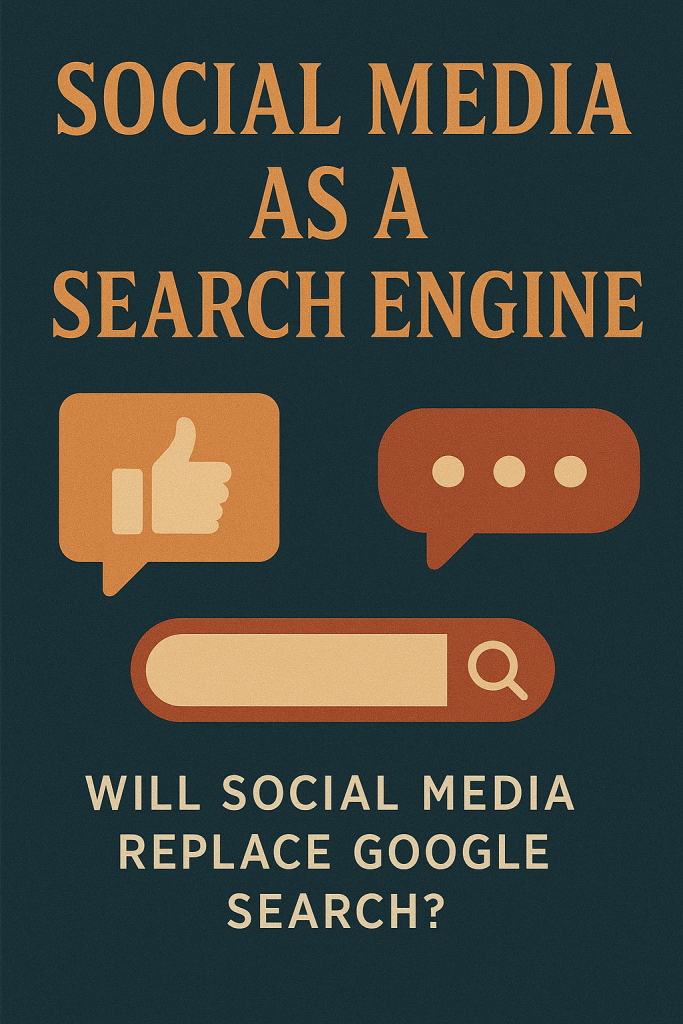
In the digital age, we have seen how social media management has evolved from a simple communication tool to a powerhouse that shapes the way people interact, consume content, and even make purchasing decisions. Platforms like Facebook, Instagram, and LinkedIn are not just social networking sites; they are becoming the new search engines for millions of users. This raises an interesting question: will social media replace Google Search as the primary way people seek information online? In this blog, we will discover the rising effect of social media platforms as search engines, their advantages and disadvantages over traditional search engines, and whether social media is truly poised to replace Google in the near future. The Rise of Social Search The move from traditional search engines to social media platforms for discovering information has been growing steadily over the past few years. What started as an alternative to searching through Google or Bing for product recommendations, local services, and even news updates has now become a norm, especially for younger generations. Facebook ad campaigns, Instagram marketing services, and even LinkedIn advertising solutions have proven to be successful methods of reaching targeted audiences, but they also highlight the trend of integrating search-like features directly within social media platforms. For many people, social media has already become a go-to tool for finding relevant content. Whether they are looking for new fashion trends, tech gadgets, restaurant reviews, or advice on how to do a task, they now turn to social networks like Instagram, TikTok, or Twitter to get these answers. This “social search” behavior shows that social platforms are offering a more personalized, visual, and engaging way of browsing compared to traditional search engines. Why Social Media is Gaining Popularity as a Search Tool 1. Visual Search One of the key reasons people are shifting to social media for searches is the rise of social media content creation, particularly in the form of visual content. Social platforms like Instagram, TikTok, and Pinterest are inherently visual, which makes them ideal for users who want to see, rather than just read, their search results. A simple scroll through Instagram or Pinterest provides a wealth of images, videos, and tutorials that are far more engaging than traditional text-based search results. 2. User-Generated Content (UGC) Another advantage of social media is the wealth of user-generated content (UGC) that can be a better resource for some search queries than professional websites. Reviews, personal experiences, and recommendations shared by users themselves often carry more weight than product descriptions on a company website. This is why social media platforms have become so crucial for product discovery and decision-making. Whether it’s watching a TikTok video on a new kitchen gadget or reading Instagram stories about a local business, UGC is an essential part of the social search experience. This is where Facebook ad campaigns and Instagram marketing services provide businesses with a unique opportunity to showcase their products or services in a way that feels personal and authentic to the consumer. 3. Real-Time, Trending Content Social media platforms are fast-paced and constantly updating with the latest trends and conversations. The Facebook ad campaigns and content on Instagram or Twitter are updated in real time, meaning users have access to relevant content that may not be immediately available on traditional search engines. The immediacy and up-to-the-minute updates offered by social platforms are critical in today’s fast-moving world of news and information. For example, when a new product or service launches, people may turn to Instagram or TikTok first to see real-world demonstrations and reviews rather than searching Google for articles. This sense of instant gratification is something Google can struggle to match, making social platforms more appealing for quick searches. 4. Personalized Search Results Search results on social media are highly personalized based on the user’s interests, past behavior, and even their social circles. Facebook, Instagram, and LinkedIn all use algorithms to tailor content to users, meaning the information you see is often more aligned with your preferences. This contrasts with Google’s approach, which primarily relies on keywords, backlinks, and SEO to determine search rankings. Social media platforms, on the other hand, allow for a deeper, more personalized search experience. For instance, if you’re researching a new city to move to, Instagram’s location-based search feature can show you relevant posts from local residents, giving you insight into what it’s really like to live there. Similarly, LinkedIn advertising solutions can direct you to posts and articles from industry professionals that might be more valuable than a generic Google search result. Social Media vs. Google Search: Which Is Better? While social media is gaining traction as a search engine, there are still several aspects in which Google continues to outperform social platforms. 1. Depth and Accuracy of Information Google is an information powerhouse. It indexes billions of websites, documents, articles, and media, ensuring that users can find the most accurate and comprehensive content available. Social media platforms, on the other hand, prioritize content that is visually engaging or tied to a trending topic, which may not always result in the most detailed or factual information. Google also provides a wide variety of search tools, such as Google Scholar, Google Maps, and Google News, which are specialized for different types of queries. These resources make Google the go-to search engine for many users when they need in-depth research or specific data. 2. Credibility When people turn to social media for information, there’s a level of trust that needs to be established with the content creator or brand. While social media content creation offers more authentic and real-time insights, it’s also rife with misinformation and content that’s influenced by paid promotions. Google’s search algorithm, on the other hand, tends to rank content based on credibility, helping users find trustworthy sources. 3. Targeted Advertising Social media platforms have proven to be greatly effective for businesses through their Facebook ad campaigns and Instagram marketing services. These platforms allow advertisers to target precise demographics with precision, tailoring ads to
Is it Worth It? How to Evaluate the Success of Your Website Redesign

You’ve invested time, energy, and capital into website redesign services, maybe even revamped your brand entirely. But now that your new site is live—what’s next? Was the investment worth it? A website redesign is more than a visual facelift. It’s a strategic move aimed at boosting performance, enhancing user experience, and increasing conversions. However, to ensure you’ve actually moved the needle, you must measure success through clear, actionable KPIs. In this blog, we’ll explore the most effective ways to evaluate your redesign and determine whether it delivered true ROI—or just pretty pixels. 1. Set Clear Goals Before You Launch The first step to evaluating success is knowing what you’re measuring against. Every redesign should be aligned with specific business objectives. Common Goals Include: If your redesign didn’t begin with goal-setting, start now by defining what “success” looks like for your brand. 2. User Experience Metrics: Are Visitors Enjoying the New Design? User Experience (UX) is at the forefront of every effective redesign. Good design guides users toward actions—great design makes those actions frictionless. Key UX KPIs: If these metrics improved, then your custom web development and UX decisions are paying off. 3. Conversion Rates: Is the New Design Driving Action? The primary goal for most websites is to convert visitors—whether that means purchases, sign-ups, downloads, or form submissions. Comparing pre- and post-redesign conversion rates is critical. Metrics to Watch: Tip: Use A/B testing tools like Google Optimize to experiment with CTA placements, layouts, and messaging post-redesign. 4. SEO Performance: Did Your Rankings Survive the Makeover? A poorly executed redesign can sabotage search engine visibility. A well-executed one will maintain or even enhance it. SEO Metrics to Evaluate: Working with a developer skilled in responsive website design ensures mobile-first optimization, which is now critical for Google rankings. 5. Mobile Responsiveness: Is It Truly Mobile-First? With more than half of global traffic coming from mobile, your redesign must excel on smartphones and tablets. Test With: If mobile bounce rates have dropped and engagement has increased, your responsive website design is doing its job. 6. Website Speed: Faster = Better Speed kills—especially slow websites. Site performance plays a major role in both UX and SEO. Use Tools Like: Improve By: If your bounce rate is dropping and conversion rate is rising, performance upgrades from your website redesign services are likely a key factor. 7. Heatmaps and Session Recordings: Watch Real Users in Action Numbers are valuable, but behavioral tools offer goldmines of insight. Tools to Use: Watch how users navigate, where they get stuck, and where they click. These qualitative insights validate your redesign decisions—or highlight where tweaks are needed. 8. Accessibility Improvements: Inclusive Design = Better Results Designing for accessibility not only expands your audience—it often leads to better UX for everyone. Evaluate: Accessibility improvements can indirectly impact bounce rate, engagement, and conversion rates—especially on forms and navigation menus. 9. Technical Health: Is Your Backend Built to Last? A polished front end needs a robust back end. Quality custom web development ensures fast load times, fewer errors, and a smoother user journey. Key Checks: If your site is throwing fewer errors and your time-to-first-byte (TTFB) is faster, the backend overhaul was a win. 10. ROI: The Ultimate Success Indicator All your metrics feed into one final judgment: return on investment. Did the money you spent on redesign actually increase revenue or leads? Formula:ROI = (Net Profit from Redesign – Cost of Redesign) / Cost of Redesign x 100 Track long-term benefits like: A high ROI means your website redesign services investment was absolutely worth it. 11. Stakeholder and Customer Feedback: Gut-Checks Matter Too Don’t ignore qualitative feedback. What do customers, clients, and internal teams say about the new design? Collect Feedback From: Sometimes the clearest signals of success come from the people actually using your site. Measure What Matters, Then Iterate The only way to know if your redesign was “worth it” is by measuring real results. Evaluate success based on a mix of hard data and human feedback. Look beyond the aesthetics and dive deep into UX, SEO, performance, and ROI. At SpeedDot360, our website redesign services, responsive website design, and custom web development ensure your digital investment pays dividends. We don’t just design websites—we build platforms that drive growth.
Should Brands Advertise on Twitch?
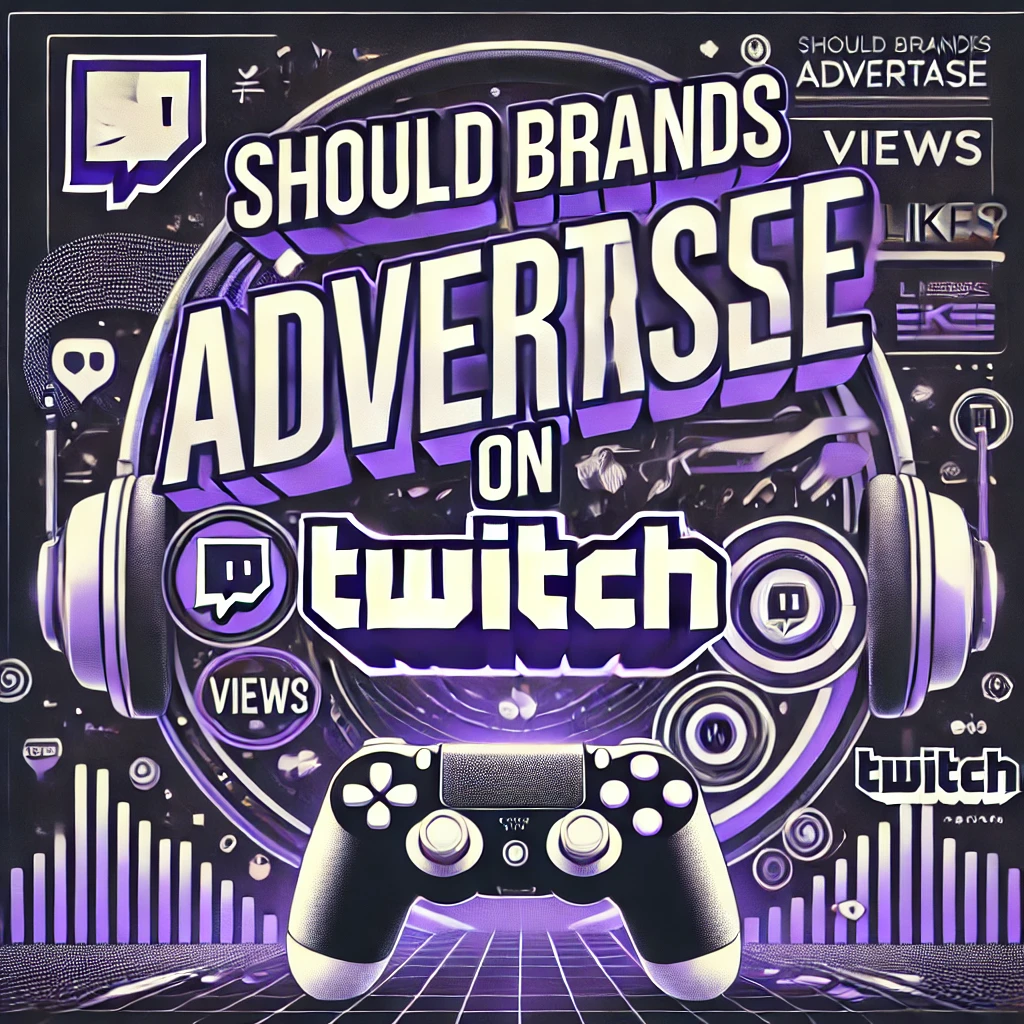
With over 140 million monthly active users, Twitch has revolutionized from a niche gaming platform into a mainstream digital powerhouse. It’s not just for gamers anymore—Twitch has become a forefront for content creators across various industries, from music and sports to tech and lifestyle. But does that mean all brands should jump on the Twitch advertising bandwagon? For brands looking to expand their social media strategy development, Twitch presents unique opportunities, but it also comes with challenges. While the platform offers high engagement rates and influencer marketing potential, advertising here requires a deep understanding of its interactive community-driven culture. In this blog, we’ll explore the pros and cons of Twitch advertising, the available ad formats, and whether your brand should invest in this platform. Understanding Twitch as an Advertising Platform Twitch is not just another social media platform. Unlike Instagram, Facebook, or YouTube, where content is consumed passively, Twitch thrives on live interactions. Viewers engage in real-time with their favorite streamers through chat, donations, and subscriptions, fostering a deep sense of loyalty. Twitch Audience Demographics Before deciding to advertise on Twitch, brands must understand who they’re reaching: Young and tech-savvy audience: 75% of Twitch users are between 16-34 years old. Engagement-driven behavior: Twitch users watch an average of 95 minutes per day—higher than most social media platforms. Community-focused culture: Viewers trust streamers’ recommendations more than traditional ads. Unlike platforms where ads disrupt the user experience, Twitch viewers are more open to advertising when it’s done authentically, particularly when endorsed by their favorite streamers. Benefits of Advertising on Twitch Advertising on Twitch can be highly effective, but only if done correctly. Here’s why many brands find success on the platform: High Engagement and Long Watch Times Unlike traditional social media management platforms, where users scroll past ads quickly, Twitch users spend hours watching live streams. This long-form content consumption means better ad retention and engagement rates. Influencer-Led Marketing Opportunities Twitch is one of the best platforms for influencer marketing agencies to collaborate with streamers. Unlike celebrities on Instagram or TikTok, Twitch influencers engage directly and continuously with their audiences, leading to stronger brand endorsements. A Loyal and Interactive Audience The Twitch community is tight-knit and passionate. When streamers endorse a brand, their audience listens. This makes sponsorships, giveaways, and branded content far more effective than traditional display ads. Unique Advertising Formats Twitch offers multiple advertising formats beyond traditional banner ads, allowing brands to integrate more naturally into the platform’s ecosystem. These include sponsored streams, interactive overlays, and branded in-game activations. Twitch Advertising Options: Which One Works Best? Twitch provides various advertising formats that cater to different marketing objectives. Understanding these options can help brands choose the best approach for their campaigns. Twitch Partner & Affiliate Sponsorships Twitch Partners and Affiliates are streamers with dedicated followers who can run ads on their channels. Brands can collaborate with streamers for sponsored content, branded giveaways, or product placements. Works best for influencer marketing agencies that want to leverage authentic creator endorsements. Best for: Brand awareness, engagement, influencer marketing. Challenge: Requires the right streamer-brand fit to avoid audience backlash. Twitch Display & Video Ads Similar to YouTube ads, Twitch offers pre-roll, mid-roll, and display ads that appear during live streams. It can be targeted based on geography, interests, and demographics. Twitch users tend to ignore these ads, but they work well when paired with a strong call-to-action. Best for Driving website traffic, conversions, and brand exposure. Challenge: Many users install ad blockers, reducing reach. Sponsorships and Product Placements Brands can sponsor a segment of a stream or have their products featured in a streamer’s content. Works best when integrated naturally into the stream’s theme (e.g., a gaming chair brand sponsoring a gaming streamer). Viewers respond positively to organic brand integrations. Best for: Long-term brand partnerships and product awareness. Challenge: Needs to align seamlessly with the streamer’s content. Twitch Extensions and Interactive Ads Overlays and extensions allow brands to create interactive experiences during streams. Viewers can click on branded buttons to access promotions, discounts, or in-game rewards. Highly engaging and blends well with Twitch’s interactive nature. Best for: Gamified promotions and direct audience interaction. Challenge: Requires custom development, increasing costs. Challenges of Advertising on Twitch While Twitch has powerful advertising potential, brands must keep the challenges and risks in mind while dealing with the platform. High Advertising Costs Compared to other social media platforms, Twitch advertising requires a higher budget. Running effective social media content creation campaigns on Twitch often involves: Paying for sponsorships or streamer collaborations. Investing in high-quality branded overlays or interactive ads. Allocating a substantial ad spend for display and video ads. 💡 Solution: Start with smaller collaborations before committing to large-scale sponsorships. Audience Mismatch & Brand Fit Not every brand’s social media strategy development is a natural fit for Twitch. Twitch is heavily dominated by gaming and tech-savvy users. Brands in fashion, beauty, or B2B industries may struggle to find the right audience. Solution: Analyze Twitch’s audience and test smaller campaigns before scaling up. Negative Brand Associations Twitch is known for its unfiltered, live nature, which can lead to risks: Some streamers may engage in controversial discussions, affecting brand perception. Live chat interactions are hard to control, leading to potential brand reputation issues. Solution: Partner only with trusted, well-vetted streamers who align with your brand values. Difficult ROI Measurement Unlike platforms like Facebook and Instagram, Twitch’s analytics tools are less refined, making it harder to track ROI. Conversion tracking is limited, especially for brand awareness campaigns. Engagement metrics (viewership, chat interactions) don’t always translate to sales. Solution: Use UTM parameters and influencer promo codes to track performance more effectively. Should Your Brand Advertise on Twitch? Key Considerations Not every brand will benefit from Twitch advertising. Here are a few key questions to ask before investing in Twitch ads: Does Your Target Audience Use Twitch? If your brand targets: Gamers, tech enthusiasts, Gen Z, or millennial males → Twitch is a great fit. Older audiences, B2B clients, or industries unrelated to entertainment/gaming
Revolutionizing Social Media Advertising Trends of 2025
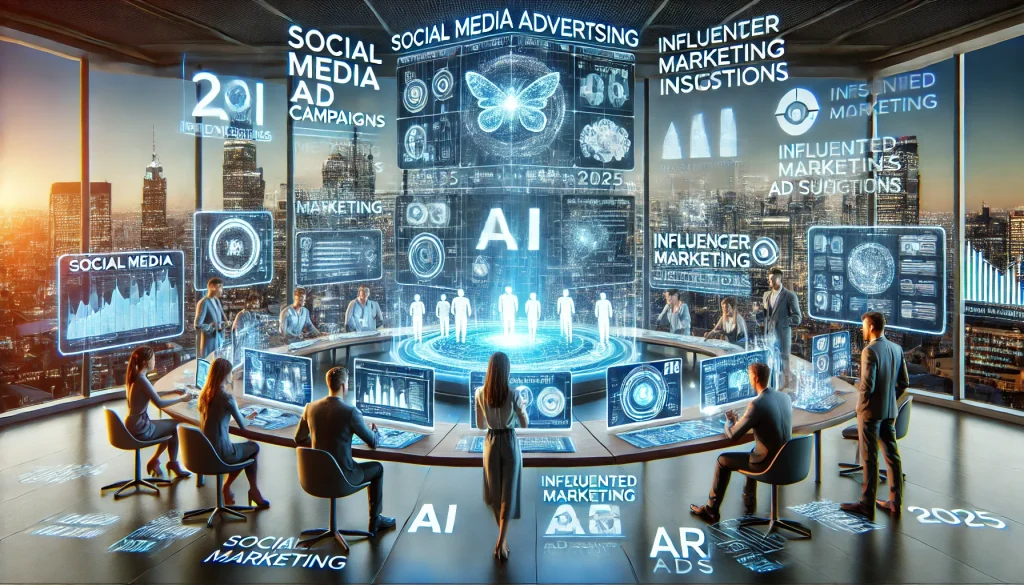
Social media advertising is evolving faster than ever, with platforms introducing innovative features, AI-driven insights, and advanced targeting capabilities. As businesses strive to stay ahead, mastering the latest social media strategy development trends will be crucial for success in 2025. In this blog, we’ll explore the biggest social media advertising trends shaping 2025 and how businesses can optimize their digital marketing strategies. AI and Automation: The Future of Social Media Advertising AI is transforming paid social media advertising, enabling businesses to optimize targeting, content creation, and audience engagement. Rather than relying on traditional methods, AI-driven automation now personalizes ad experiences, predicts user behavior, and streamlines the ad placement process. Artificial Intelligence (AI) is revolutionizing paid social media advertising by enhancing targeting accuracy, optimizing ad delivery, and personalizing user experiences. Key AI-driven trends include: Automated Ad Creation: AI-generated ad copies and visuals tailored to audience preferences. Predictive Analytics: AI forecasts user behavior, improving ad targeting and conversions. Chatbot Integration: AI-powered chatbots facilitate instant interactions and customer engagement. Brands that integrate AI into their advertising strategies will have a competitive edge by improving efficiency and audience engagement. Video Content Continues to Dominate Short-form videos, interactive live streams, and immersive content remain at the front of social media strategy development. Platforms like Instagram Reels, TikTok, and YouTube Shorts provide businesses with an engaging way to showcase products, tell brand stories, and foster audience interaction. With platforms like TikTok, Instagram Reels, and YouTube Shorts leading the way, short-form videos continue to dominate social media management strategies. In 2025, businesses should focus on: Engaging, high-quality content that captures attention within the first few seconds. Shoppable videos that permit users to purchase directly from the platform. Interactive elements like polls, Q&A, and live shopping events to enhance engagement. Short-form videos provide an authentic way for brands to collaborate with their audience and drive conversions. The Emergence of AR, VR, and the Metaverse With the growing popularity of AR and VR experiences, brands are using these technologies to create interactive advertising campaigns. From virtual try-ons to immersive shopping experiences, AR and VR are redefining consumer engagement on social media platforms. AR and VR are transforming how brands interact with consumers, making advertising more immersive and interactive. Key trends include: AR Filters & Try-On Features: Users can visualize products before purchasing (e.g., virtual makeup try-ons). VR Shopping Experiences: Brands create virtual storefronts for customers to discover products in a digital space. Interactive 3D Ads: Engaging ad formats that enhance user experiences on platforms like Instagram and Snapchat. As AR/VR adoption increases, businesses incorporating these technologies into their advertising strategies will see higher engagement and conversion rates. Hyper-Personalization in Advertising Personalized advertising will reach new heights in 2025, driven by AI and data analytics. Key developments include: Dynamic Content Customization: Ads tailored to individual preferences, behaviors, and demographics. User-Generated Content Integration: Leveraging customer testimonials and influencer content for more authentic promotions. Predictive Retargeting: AI analyzes browsing patterns to serve hyper-relevant ads. Consumers now expect highly personalized experiences, making this trend essential for boosting engagement and ROI. Social Commerce Becomes the New Norm The incorporation of e-commerce into social media platforms is revolutionizing online shopping. Platforms like Instagram, TikTok, and Facebook allow users to browse and purchase products seamlessly, making social media management a key component of sales-driven strategies. Social commerce is redefining online shopping by merging e-commerce with social media platforms. Notable trends include: One-Click Purchases: Seamless checkout experiences within social apps. Livestream Shopping: Real-time product demonstrations with instant purchasing options. AI-Powered Recommendations: Personalized product suggestions in accordance with user interactions. Brands leveraging Instagram marketing services and Facebook Shops will capitalize on social commerce trends in 2025. Increased Focus on Privacy and Ethical Advertising With rising concerns over data privacy, brands must adapt to new regulations and ethical advertising standards. Important developments include: Cookie-Less Targeting: Shifting from third-party cookies to first-party data and contextual targeting. Transparent Advertising Practices: Clearly communicating data usage policies to users. Ethical AI in Advertising: Ensuring AI-generated content is unbiased and respects user privacy. Brands prioritizing privacy-compliant advertising strategies will build trust and maintain customer loyalty. Redefining Influencer Marketing in 2025 Influencer partnerships are evolving beyond traditional collaborations. Brands now prioritize micro-influencers, AI-driven influencer selection, and performance-based contracts to ensure more meaningful engagement and tangible ROI. Influencer marketing continues to grow, but in 2025, authenticity and niche collaborations will take center stage. Key shifts include: Micro and Nano Influencers: Smaller influencers with highly engaged audiences drive more authentic interactions. AI-Powered Influencer Matching: AI tools connect brands with the most suitable influencers. Performance-Based Partnerships: Brands focus on measurable ROI rather than follower count. Businesses that refine their influencer marketing strategies will see higher engagement and conversion rates. Audio Advertising on Social Media With the dynamic surge of podcasts and audio-based platforms, social media audio advertising is gaining traction. Popular trends include: Voice Search Optimization: Ads optimized for voice search queries. Interactive Audio Ads: Engaging audio experiences with call-to-action prompts. Podcast Sponsorships: Brands collaborating with podcasters to reach niche audiences. Incorporating audio ads into social media strategy development ensures a well-rounded marketing approach in 2025. Cross-Platform Integration As users engage with multiple platforms, brands need a cohesive cross-platform advertising strategy. Key considerations include: Consistent Branding Across Channels: Unified messaging across Facebook, Instagram, TikTok, and LinkedIn. Omnichannel Marketing Strategies: Seamless experiences across social media, email, and websites. Automated Content Scheduling: AI-powered scheduling tools for optimized posting times. Cross-platform integration enhances brand visibility and strengthens audience engagement. Diversification of Social Media Ad Platforms While Facebook remains a powerful advertising channel, brands are shifting towards a multi-platform approach, investing in LinkedIn ads for B2B marketing, TikTok for younger audiences, and emerging social networks for niche markets. Facebook remains a leading force in social media advertising, but platforms like TikTok, LinkedIn, and emerging networks are reshaping digital marketing. Future trends include: AI-Powered Facebook Ad Optimization: Automated bidding and audience segmentation. LinkedIn B2B Advertising Growth: Increased investments in professional networking ads. TikTok’s Continued Expansion: Short-form video advertising innovations. Brands that diversify
Revolutionize Your Business with Different Social Media Content Types | A Lifesaver To Make Big
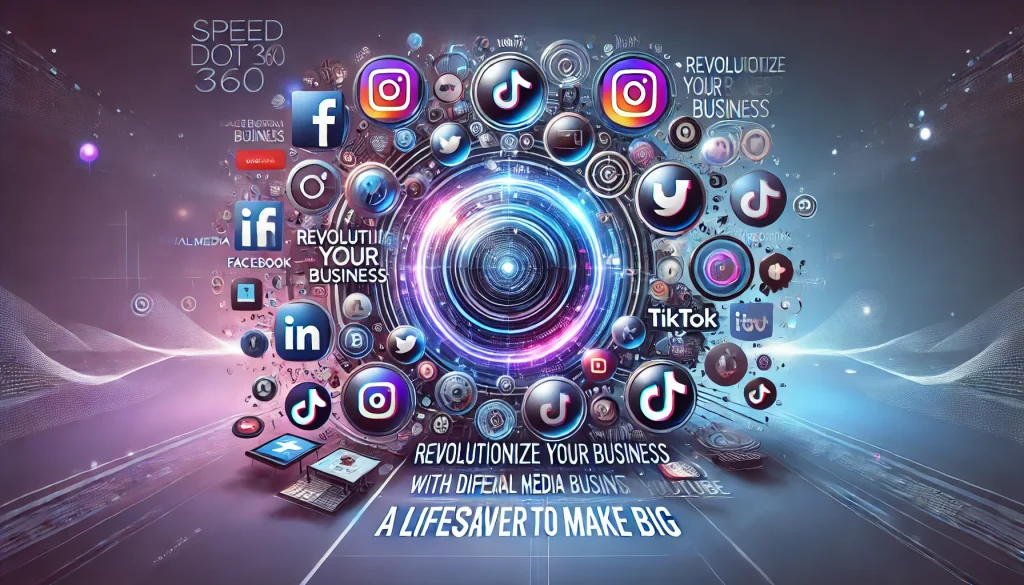
Do you want to grow your business through effective social media marketing content creation? Then, delve into the diversified social media content types for setting your business apart. Social media marketing is a renowned pit stop that can essentially illuminate your brand’s path toward glory. However, without the essence of social media marketing knowledge, you are just driving your brand astray. In this blog, we will help you discover efficient types of content that can resonate with your target audience with ease and help you grow your wings of profits effectively. What Are the 4 Content Pillars for Social Media? Before delving deep into the types of content, acknowledging the four prime content pillars will give you a head start in your future social media strategy. In order to diversify your brand, you need to enable your brand to focus on a specific communication medium for social community interaction. The themes mentioned below are the foundation of your social media strategy that can sustain your social media workflow. Promotional content Educational content Inspirational content Entertaining content However, the content strategy is directly proportional to the service or product you offer to your audience. Therefore, comprehensively analyze your services and craft a perfect social media content plan; for ultimate assistance, you can always partner up with a social media marketing agency in the USA and lead your brand to success. Understanding Social Media Content Types Different platforms require tailored content strategies. Here’s a breakdown of the top content types that businesses should integrate into their social media marketing plan: Short-Form Video Content Short-form videos dominate platforms like Instagram Reels, TikTok, and YouTube Shorts. These videos are engaging, highly shareable, and perfect for increasing brand visibility. Why It Works: Captures attention within seconds. Encourages shares, boosting organic reach. Ideal for showcasing products and behind-the-scenes insights. Best Platforms: TikTok, Instagram Reels, YouTube Shorts, Facebook Stories. Long-Form Educational Content Long-form videos and blog posts work well on platforms like YouTube and LinkedIn, offering in-depth insights into industry trends and thought leadership. Why It Works: Positions brands as experts in their industry. Enhances trust and credibility. Drives more engagement through valuable knowledge-sharing. Best Platforms: YouTube, LinkedIn, Medium, company blogs. Carousel Posts & Infographics Carousels on Instagram and LinkedIn help brands share step-by-step guides, industry insights, and statistics in an engaging format. Infographics enhance content readability and shareability. Why It Works: Boosts engagement with swipe-friendly content. Easily digestible, making complex information accessible. Encourages and shares, increasing reach. Best Platforms: Instagram, LinkedIn, Pinterest. User-Generated Content (UGC) UGC is any content customers create, such as testimonials, reviews, or social media posts featuring a brand’s products. Why It Works: Builds authenticity and social proof. Increases brand loyalty through community engagement. Encourages word-of-mouth marketing. Best Platforms: Instagram, Twitter, Facebook, TikTok. Live Streaming & Webinars Live video has truly revolutionized how businesses interact with their audience. From product launches to Q&A sessions, real-time engagement fosters deeper connections. Why It Works: Real-time interaction enhances audience engagement. Strengthens brand trust and transparency. Prioritized by platform algorithms, increasing visibility. Best Platforms: Facebook Live, Instagram Live, YouTube Live, LinkedIn Live. Influencer Partnerships & Collaborations Working with influencers extends a brand’s reach and credibility. Whether micro or macro-influencers, their endorsement can significantly impact your business. Why It Works: Taps into established audiences. Increases conversion rates through trusted recommendations. Works well with Instagram marketing services and Facebook ad campaigns. Best Platforms: Instagram, TikTok, YouTube, LinkedIn. Polls, Quizzes, and Interactive Content Engaging with your audience through polls and quizzes is a great way to gather insights while keeping users entertained. Why It Works: Encourages audience participation. Provides valuable consumer feedback. Boosts engagement rates on social platforms. Best Platforms: Instagram Stories, Twitter Polls, Facebook. Storytelling Through Blog Posts Well-crafted blog posts drive traffic to websites and position brands as industry leaders. A strong social media content creation strategy should include blog links shared across social channels. Why It Works: Increases website traffic and SEO rankings. Strengthens brand credibility and thought leadership. Provides long-term value to readers. Best Platforms: LinkedIn, Medium, company websites, and Facebook. What is the 50/30/20 Rule for Social Media? The 50/30/20 rule is an essential guideline for maintaining balance in your social media content strategy: 50% Value-Based Content: Educational posts, industry insights, and how-to guides that provide value to your audience. 30% Promotional Content: Posts that showcase your products, services, and customer testimonials. 20% Engagement-Driven Content: Polls, interactive posts, and memes to foster community engagement. This rule ensures that brands don’t overwhelm followers with excessive promotional posts, allowing for a well-rounded social media presence. How Speed Dot 360 Will Thrive to Skyrocket Your Business With SMM At Speed Dot 360, we specialize in social media management, offering comprehensive solutions tailored to each brand’s needs. Whether it’s LinkedIn advertising solutions or paid social media advertising, we ensure data-driven strategies that deliver results. Our team crafts high-quality social media content calendars that align with your business objectives. We analyze social media metrics, optimize ad spend, and create campaigns that truly connect with audiences. With years of expertise in Facebook ad campaigns and Instagram marketing services, we position brands in front of their target customers, ensuring maximum impact and ROI. Whether you’re a startup or a large enterprise, Speed Dot 360 provides the perfect blueprint for digital success. Partner with us today and take your social media game to the next level! Conclusion Adapting diverse social media marketing content types is key to maximizing engagement and business growth. By leveraging short-form videos, interactive content, and influencer collaborations, you can build a robust digital presence. Want to revamp your social media game? Connect with Speed Dot 360, and let’s create a winning social media strategy development plan to elevate your brand!

